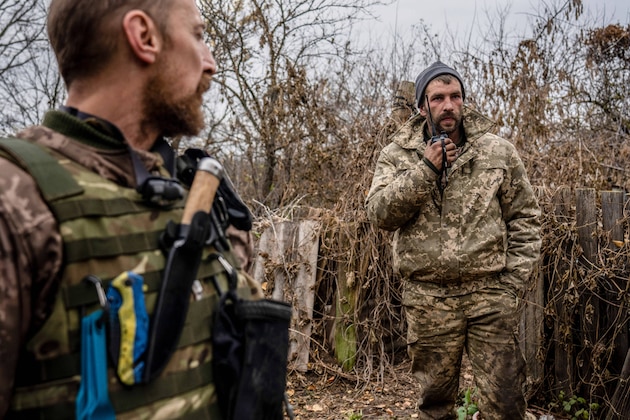A front line hundreds of kilometers long, lined with muddy trenches, constant shelling, many dead, but no progress. It is no coincidence that the picture that some media are currently drawing of the Ukraine war is reminiscent of the trench warfare on the Western Front in World War I. As then, the current war is stuck in a dead end. Neither of the two warring parties could record successful advances of strategic relevance. But that’s not true, says military expert Mick Ryan.
According to the Major General, the comparison with trench warfare is flawed. “An impasse in war implies a geographic, economic, military, and intellectual deadlock. This is not the case in Ukraine,” the Australian wrote on Twitter. “Both sides and their supporters will have a tremendous range of tactical and strategic options in 2023.”
What is currently happening on the battlefield is the normal ebb and flow of a long war being fought by well-armed countries with external support. After the initial wave of attacks, with each side launching large-scale, heavy blows designed to bring the opponent down as quickly as possible, many wars would settle into a cycle of pulses and pauses.
Ryan cites the example of the successful Ukrainian offensives in Cherson and Kharkiv, which restored much territory to the war-torn country and boosted Ukrainian morale. These maneuvers were also so victorious thanks to the slower pace of the operation. After all, even the most motivated soldier would need a break from action at some point to reflect, gather strength and relax before attacking again.
Even in this phase, when the war is progressing rather slowly, both the Ukrainian and the Russian troops are extremely active. “The layman does not see most of it because there is nothing exciting to report, because it hides operational security or because the normal fog of war lies over it,” writes the major general.
The currently most important theaters of war are Bachmut and Soledar. And that, according to Ryan, although neither city has great strategic relevance for the two countries. Other experts, on the other hand, disagree with this view and attest Bakhmut in particular an important position as a transport hub in Donetsk. Putin would also send tens of thousands of soldiers to this area on campaigns of conquest because of a lack of war successes and for propaganda reasons.
Russian troops captured the salt mining town of Soledar on Monday, as confirmed by the commander of a Ukrainian drone unit, according to n-tv. From there, the Kremlin wants to encircle Bakhmut, just 15 kilometers away, which the Ukrainian troops have been defending in exhausting battles since the fall.
A decisive offensive is also currently underway in the Kreminna-Svatove-Starbil city triangle in the Luhansk Oblast, which the Ukrainian troops are continuing to approach methodically. A victory would be a milestone for Zelenskyy’s troops. “If Ukraine secures this critical city triangle, Russia will probably no longer be able to hold its position in Luhansk and its troops in Donetsk will face a dilemma of how to direct their troops,” writes the major general.
Both campaigns, both in Donetsk and in Luhansk, are a sign that a lot more is happening at the moment than the layman realizes. “The strategic battle rages on unabated,” said Ryan. Tactical reconnaissance on the ground, in the cybersphere and in the air takes place along the entire front. Always on the lookout for enemy weaknesses that can be exploited in upcoming offensives. The Russians would deliberately continue their attacks on Ukrainian civilians and infrastructure. At the same time, both Moscow and Kyiv would “vigorously” direct their national and international information campaigns.
Both sides still have the military, economic and intellectual potential to develop and implement creative ways of waging war in order to win the battles against their opponents and exhaust their resources. “We may be in a low-speed phase of this war, but we are still a long way from a standstill,” says the military expert.















